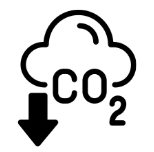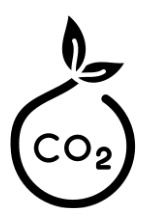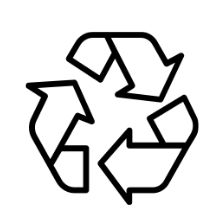
Lower Carbon Footprint in Production
rPET emits 79% less CO₂ than virgin PET. Bio-based plastics like PLA can reduce greenhouse gas emissions by up to 75% compared to conventional plastic.

Approximate kg of CO₂ per kg of material:
- Aluminum – 8.14
- Paper – 2.42
- rPET – 1.76
- rHDPE – 1.10

Reduced Energy Consumption in Manufacturing
Recycled HDPE saves 88% of energy, and recycled PET saves 79% compared to virgin production. In contrast, glass & aluminum require significantly more energy for processing & recycling.

Circular Economy Benefits
Using recycled PET and HDPE supports a circular economy. Every 1 kg of recycled plastic saves 1.2 – 2 kg of CO₂ emissions.

Lightweight & Reduces Transport Emissions
PET bottles weighs up to 90% less than glass bottles, leading to lower fuel consumption and CO₂ emissions during transport.

Reduced Waste in Landfills and Oceans
Paper and glass degrade naturally but have a higher waste footprint due to bulkiness and high disposal energy needs. Recycled plastics reduce landfill dependency, with bio-based plastics like PLA breaking down into non-toxic components in industrial composting.

Reduced Land and Water Use
Producing 1 ton of paper emits 3 times more CO₂ and requires more than 3,000 liters of water, whereas bio-based plastics need much less.

Potential for Carbon Sequestration with Bio-Based Plastics
Bio-based plastics store CO₂ absorbed during plant growth, contributing to lower net emissions.

Extended Product Lifecycle with Recycling
Unlike glass and metal, which require high temperatures, plastics can be recycled at lower temperatures. Recycling 1 ton of plastic saves 5,774 kWh of energy, 16.3 barrels of oil, and 30 cubic yards of landfill space.

Improved Performance with Less Material Usage
Advanced recycled plastics in thermoforming require less material to achieve the same strength as other packaging.
